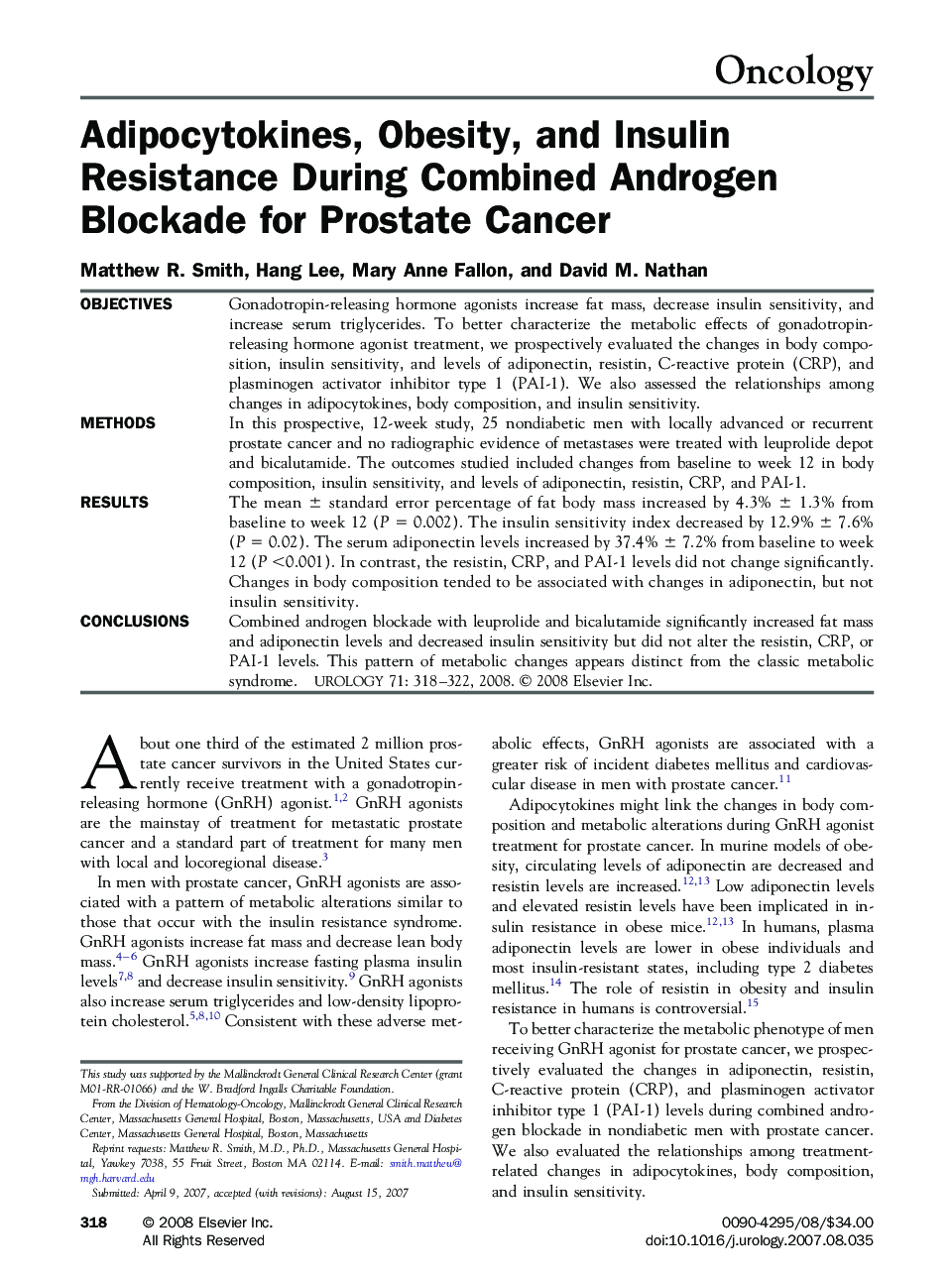| Article ID | Journal | Published Year | Pages | File Type |
|---|---|---|---|---|
| 3903494 | Urology | 2008 | 5 Pages |
ObjectivesGonadotropin-releasing hormone agonists increase fat mass, decrease insulin sensitivity, and increase serum triglycerides. To better characterize the metabolic effects of gonadotropin-releasing hormone agonist treatment, we prospectively evaluated the changes in body composition, insulin sensitivity, and levels of adiponectin, resistin, C-reactive protein (CRP), and plasminogen activator inhibitor type 1 (PAI-1). We also assessed the relationships among changes in adipocytokines, body composition, and insulin sensitivity.MethodsIn this prospective, 12-week study, 25 nondiabetic men with locally advanced or recurrent prostate cancer and no radiographic evidence of metastases were treated with leuprolide depot and bicalutamide. The outcomes studied included changes from baseline to week 12 in body composition, insulin sensitivity, and levels of adiponectin, resistin, CRP, and PAI-1.ResultsThe mean ± standard error percentage of fat body mass increased by 4.3% ± 1.3% from baseline to week 12 (P = 0.002). The insulin sensitivity index decreased by 12.9% ± 7.6% (P = 0.02). The serum adiponectin levels increased by 37.4% ± 7.2% from baseline to week 12 (P <0.001). In contrast, the resistin, CRP, and PAI-1 levels did not change significantly. Changes in body composition tended to be associated with changes in adiponectin, but not insulin sensitivity.ConclusionsCombined androgen blockade with leuprolide and bicalutamide significantly increased fat mass and adiponectin levels and decreased insulin sensitivity but did not alter the resistin, CRP, or PAI-1 levels. This pattern of metabolic changes appears distinct from the classic metabolic syndrome.
